Jack O'Lantern mushrooms also known as foxfire mushrooms or Omphalotus species, are a poisonous mushroom commonly confused with edible chanterelles. They're a mushroom you need to know if you enjoy foraging as they're one of the best examples of a poisonous look a like I know of.
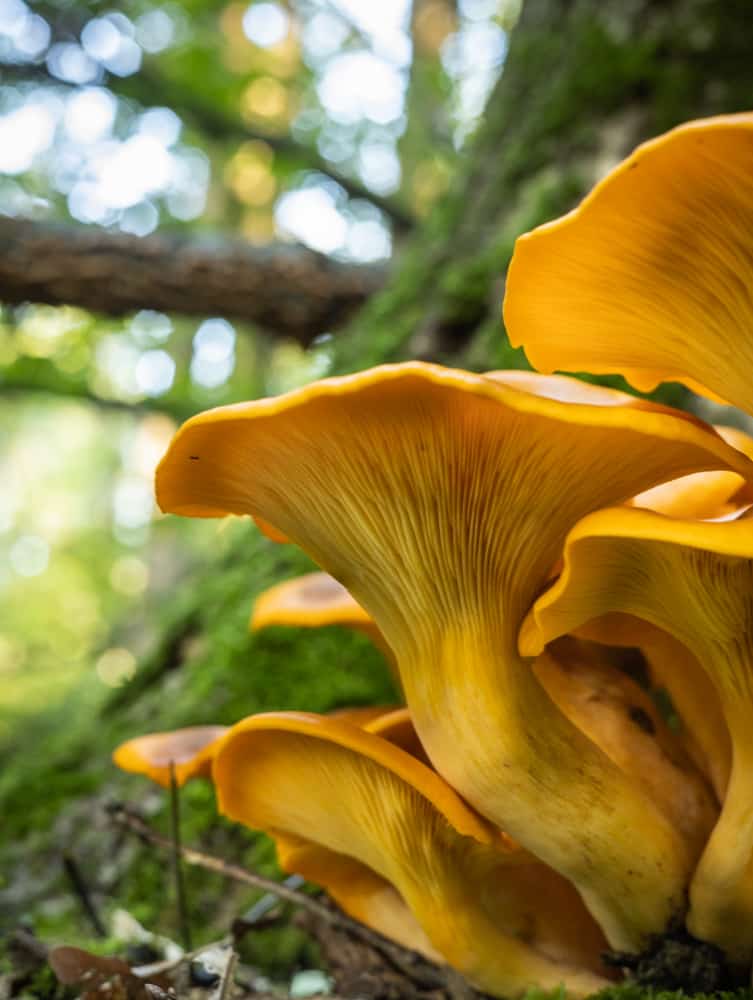
Experienced mushroom hunters can easily separate chants from jacks. But, people new to foraging and mushroom hunting can definitely mistake them for another. I know as I did it once myself. Unfortunately I remember them tasting pretty good (thankfully I didn't cook or swallow them).
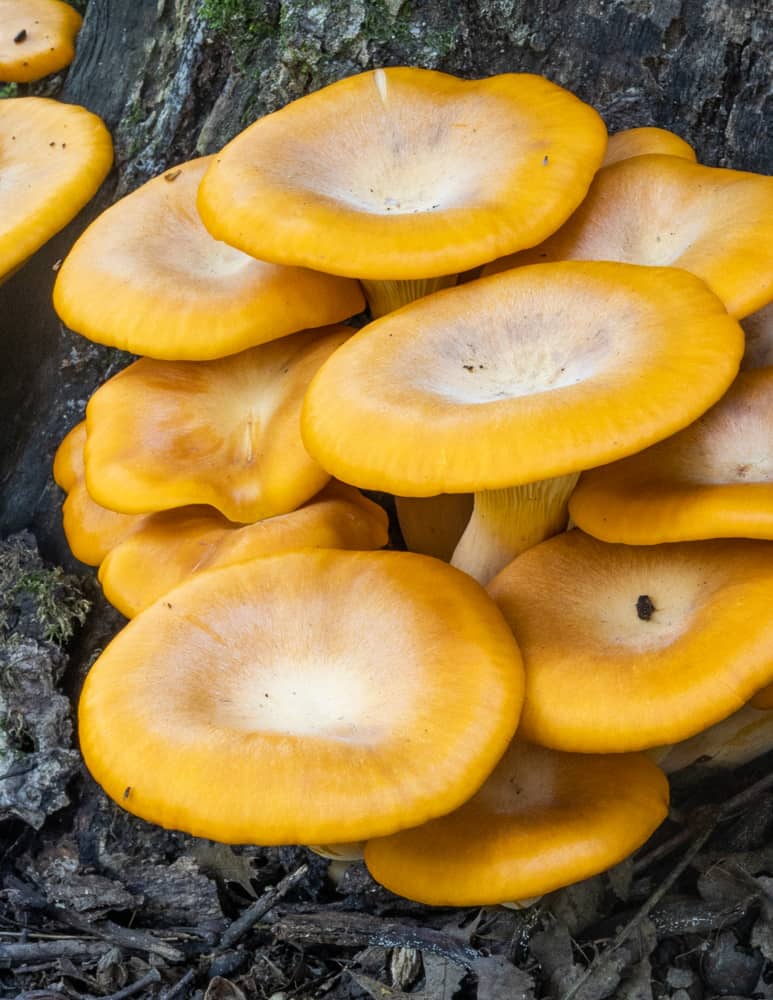
In this post I'll go over everything you need to know to separate Jack O' Lanterns from a chanterelle mushroom with confidence.
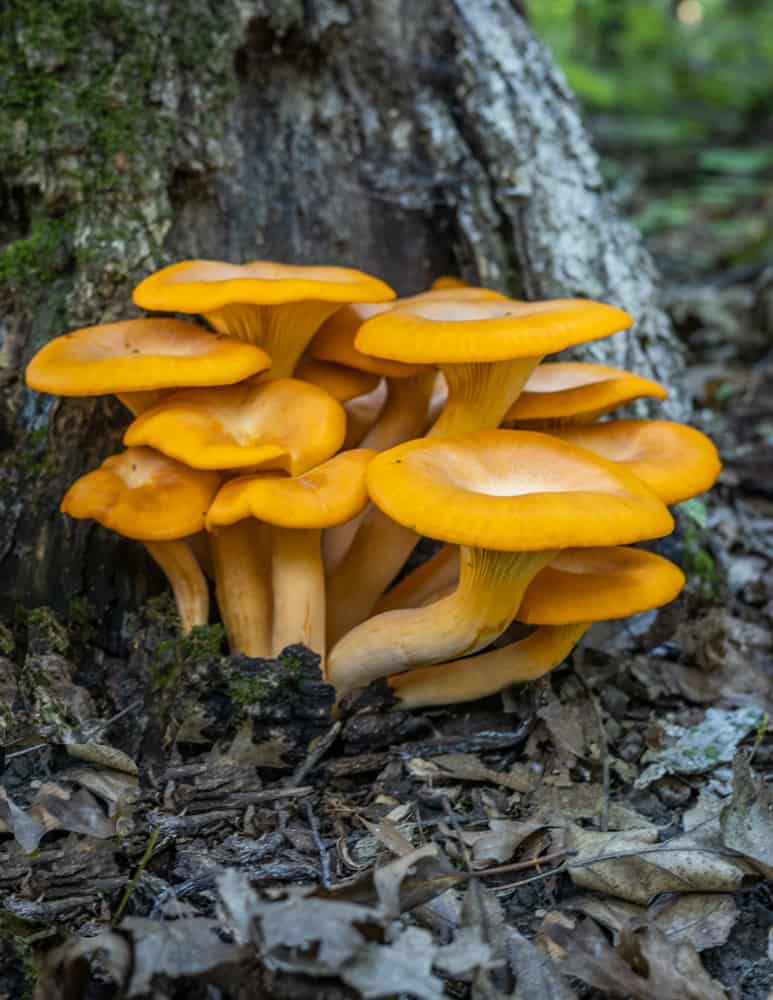
Description
Jack O'Lantern mushrooms are bright orange or pumpkin-colored mushrooms that grow in hardwood forests. Typically they grow in large clusters on the forest floor. They're often growing over roots or buried wood, as well as on and around the base of hardwood trees and stumps.
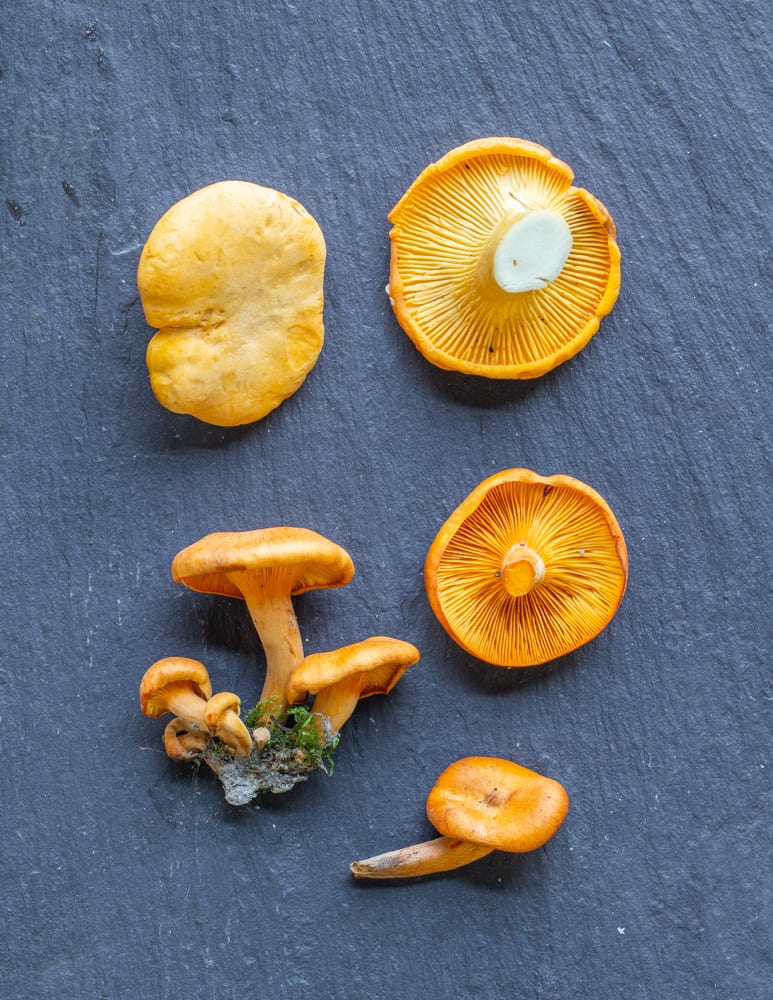
Habitat
Jack O Lanterns grow in hardwood forests during the summer and fall, often in the same woods, at the same time, as chanterelles. It's possible to see them in mixed woods with coniferous trees, but the mushrooms will always be growing on or around hardwood trees.
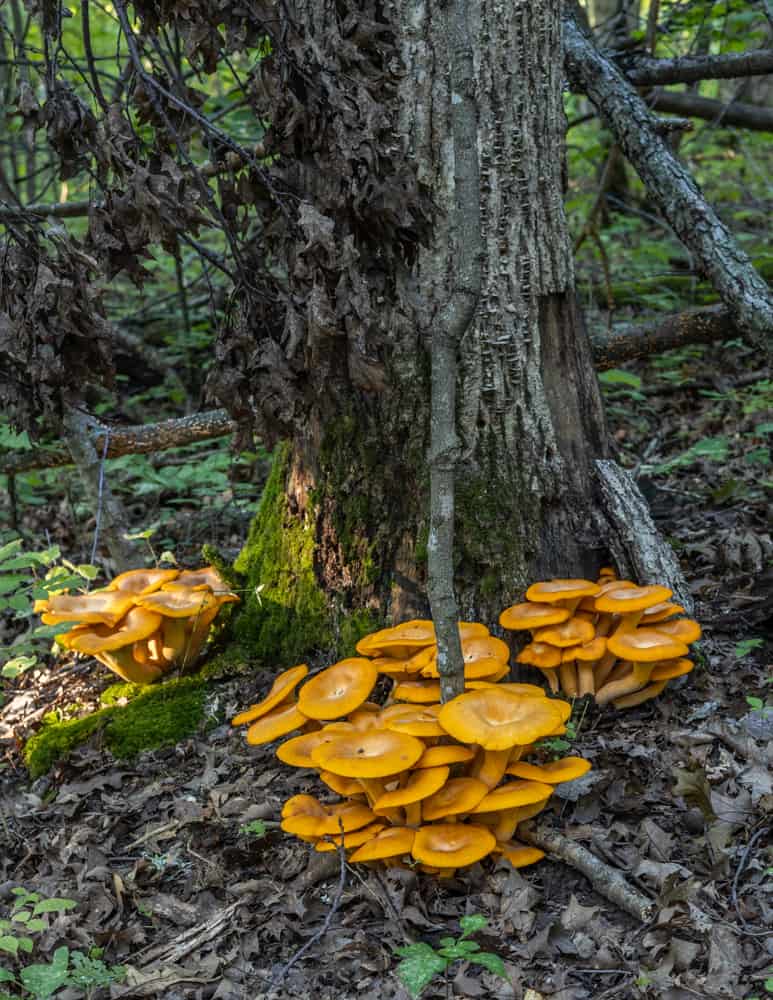
Chanterelles are mycorrhizal or symbiotic, living in harmony with trees. Jacks eat and decompose wood and appear to look more like an infection when fruiting, often appearing in very large clusters. Here's the most noticeable and important identification characteristics I know of.
Jack O'Lantern Identification
- Jacks come in bright orange colors, typically orange or pumpkin colored. Chanterelles are often described as having an egg-yellow color.
- Jacks are often funnel shaped at maturity. Chanterelles usually aren't.
- Jack O'Lanterns grow from dead wood and stumps, as well as over the roots of trees on the ground. Chanterelles grow from the ground-always.
- Jacks have true gills. Chanterelles have veins, or false gills.
- Often grow clustered. Golden chanterelles may grow clustered occasionally, but it's rare.
- Jack O Lantern mushrooms often grow in large clusters.
- Jacks have a thick, fleshy, often curving stem.
- Jack O'Lanterns are usually much larger than chanterelles, often 2-3 times larger at maturity.
- Jacks have bright orange to orange-yellow flesh. Some chanterelles have egg-yellow flesh, others may be white or dull yellow.

Jack O Lantern Species
There's a number of species of Jack O'Lantern. In North America, there should be Omphalotus illudens, and Omphalotus olivescens, to name two. At the time of this writing, the European species is still Omphalotus olearius. All species of Jack O'Lantern look similar, and separating them into species isn't necessary to separate them from edible chanterelles.
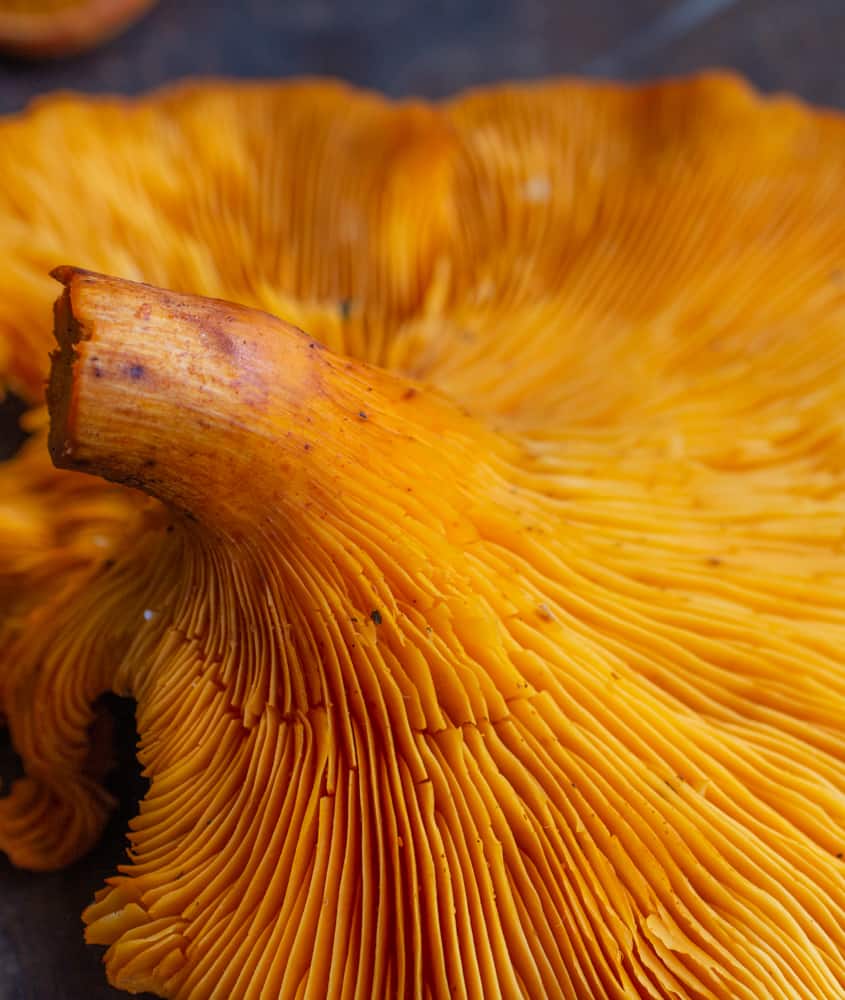
Toxins
The main problematic compound in Jack O'Lanterns seems to be muscarine, although there are probably other compounds too.
Muscarine is also found in Amanita Muscaria. If ingested, can cause profuse sweating, gastro-intestinal distress and upset stomach, including intense vomiting and diarrhea.
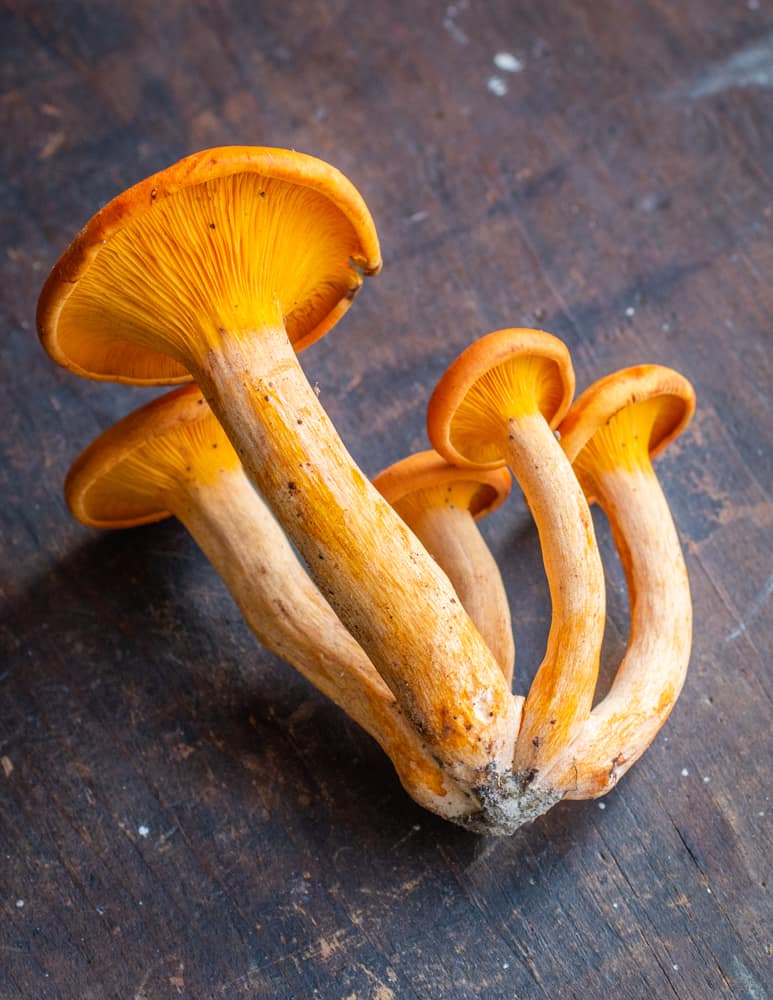
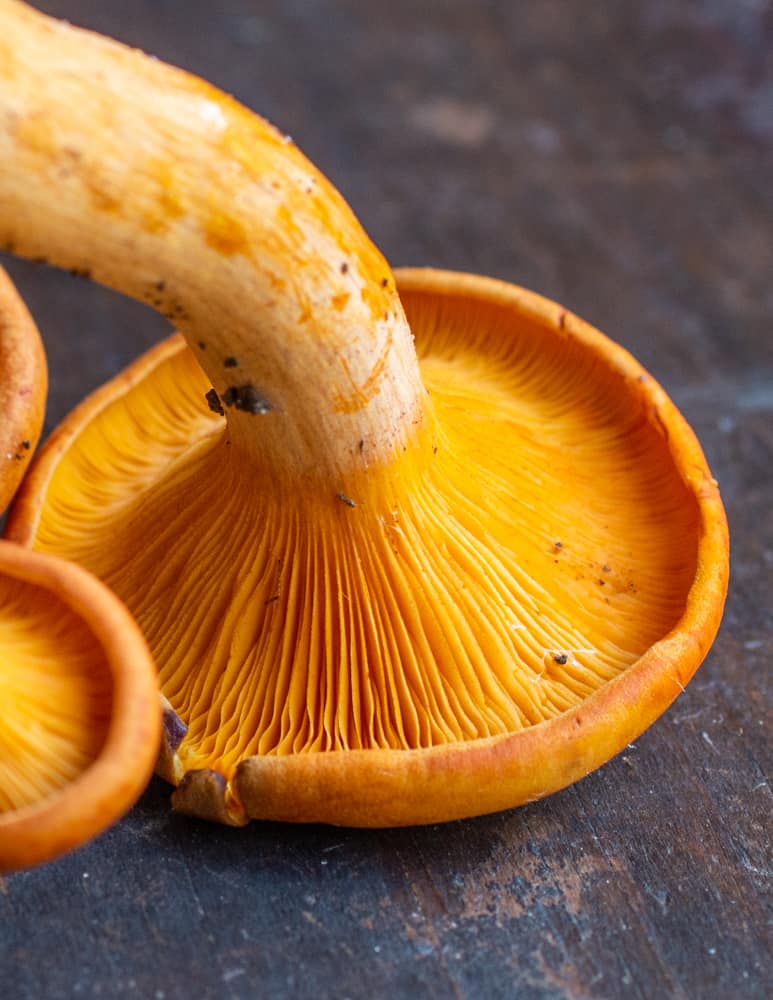
Bioluminescence
You may have heard the Jack O'Lanterns glow in the dark, and it's true. According to David Arora, people have said the light coming from the glowing mushrooms is bright enough to read a newspaper.
There's a number of theories as to how and why these mushrooms developed the glowing trait. One of my favorites is that at night, the glowing mushrooms, and glowing lines of mycelium on the ground attract insects to the mushrooms.
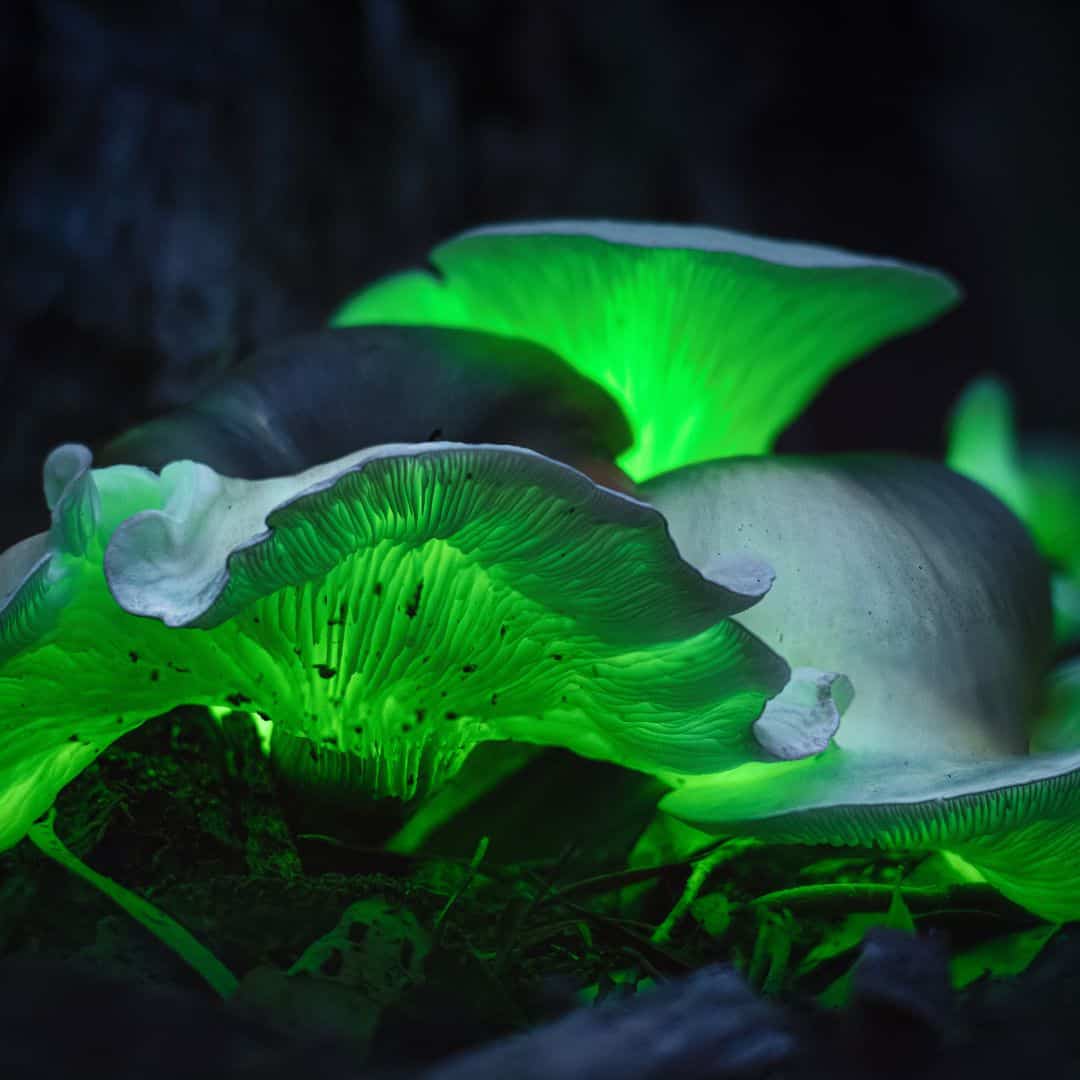
The insects travel to the mushrooms when it's getting ready to sporulate. In the process they help to spread the spores and assist the mushrooms in reproduction. Think of it like an insect disco.
If you want to see the glow for yourself harvest a few healthy adult mushrooms that are ready to spore. You should be able to see a natural white spore print on caps.

Take the mushrooms and bring them into a completely dark place like a closet, then wait a while. David Arora says the time to see the glow is about the time it takes to eat a grilled cheese sandwich.
It's a fascinating feature in the world of wild mushrooms. If you want to capture the glow in an image, you'll need to do a long-exposure using a tripod.

Andrew
Does anyone eat these prepped like how you prep muscaria to reduce the poison?
Alan Bergo
I've never heard of that and would strongly recommend against experimenting with it when there's so many other nice mushrooms to try.
connielhill
Please explain the explicit difference betw/ chanterelles and jack oh lanterns.
Alan Bergo
Please read the article-it's the main topic.
Marianne
What about differentiating between Jack o'lanterns and red chanterelle?
Alan Bergo
Easy. Red chants are small, even compared to other chanterelles. Jack o lanterns are generally larger. Red chanterelles are red, jacks are orange.
Matt
My wife and I had the sickening experience of mistaking jack o' lanterns for chanterelles last year. Unfortunately we hadn't read this Forager/Chef article prior to harvesting them. We both got sick but it affected me more. We made omelettes with the mushrooms for lunch. For the next eight or nine hours I was throwing up an average of once an hour. Until now we didn't know what the problem was. I had sworn off ever harvesting chanterelles because of this wretched experience. I still may be hesitant to harvest chanterelles in the future, but then again I may try a small quantity the next time I'm 100% sure that's what they are. Thanks for this info!
Alan Bergo
Hey thanks Matt. I'm so sorry you had a bad experience. I know the feeling and I've done it myself, and also to others, including partners. I think it's important to remember that the fault here is not on the mushrooms, it's on us. Don't swear off chanterelles because of a mistaken ID. Once you get to know them you'll laugh that you ever confused the two, but it's also a very common mis-identification, so don't feel bad either!
connielhill
You know honestly they smell so yummy its hard to resist sauteing them up and gobbling them down! I was at the local garden center yesterday and saw 2 large bunches of ????? growing out of the bottom of pots. They look like chanterelles but now I may wait...or eat a teeny corner and see if I get sick? What to do? So tempting!
Roxanne
I’d like to post this to say that eating these mushrooms - at least, a small serving - won't kill you, but DON’T DO IT! A couple of days ago, my neighbor brought me 4 *chanterelles* he had picked in his yard; oh, goody! A couple were a bit large for chanterelles, but I’ve seen some large ones before. Several years ago, I had gathered some nice ones from a part of his yard where 12-15 white oaks grow. When he gave these fungi to me the other day, they were loose in his hands (not connected to one another) and he said they came “from the lawn by an oak tree.” The 'shrooms smelled lightly fruity and were nice & firm.
Soon afterward, I fried up some onions in butter & a little olive oil, added the cleaned, sliced mushrooms and allowed things to cook several minutes before adding some parboiled potatoes, then let everything cook a bit longer. Smelled good, and it was indeed tasty, though the mushrooms were a bit tougher than I thought they should be. Ate probably what amounted to maybe 1/4 to 1/3 cup of chopped mushrooms along with the veggies; put the rest of the meal in a container for the next day.
Well, the next day the rest went into the garbage! About 30-45 minutes after I had eaten my supper, my stomach felt very queasy. Then I began to salivate as my stomach began to churn. For the next 3-4 hours, I vomited violently and repeatedly. Nice to know that my gut recognized POISON!! and did its best to get rid of it!
Last evening my neighbor called me over to look at more that had popped up - in a very lovely, very typical cluster of more than 15 fruits coming from a single "stem" that I was able to pull intact from the ground. These were NOT growing in the area where the real chanterelles had appeared in the past, but a couple hundred yards away, on the other side of his house, but about 6 feet from the stump of a white oak that had died a while back. I told my neighbor what had ensued 2 nights before & he apologized saying, "Not my fault - that's why I don't eat mushrooms!" I assured him it was indeed not his fault but my stupidity and the fact that I wanted to believe they were chanterelles - but had I seen them actually growing, I would have known they were not. Lesson learned; from now on, I’ll gather my own mushrooms – and for now have completely lost my taste for chanterelles!!
Alan Bergo
Oh my lord god. I am really sorry you had an experience like that. Don't let it turn you off of chanterelles. Chanterelles are easy to differentiate from Jack O'Lanterns, but you do need to be familiar with them. Keep in mind it wasn't the chanterelles fault that you ate the Omphalotus. Hope you're feeling better.
Roxanne
Thank you, Chef, for your good wishes. Oh, I was perfectly fine the next day, albeit tired from my gut keeping me up until about 2 AM. 😉 I did go a bit easy on my stomach that next day however, eating mild & innocuous foods! No: I do not fault the chanterelles - it was totally my stupidity, and as I said, have just lost my appetite for chanterelles *for now*. They are too wonderful to forego entirely!
Claudia Marieb
I'm so glad I came across your website. And especially to read that Jack o Lanterns fruit a little later in the summer, since today I worried I picked 2 and threw them in the bag alongside the chanterelles. These 2 were growing right next to each other, the bases seemed to be attached or right alongside each other, and so afterwards I began worrying that they were actually a very young jack o lantern cluster. Maybe a cluster starts with just 2.
What do you think?
I am brand new to collecting chanterelles, today was my second time, and so I would fit perfectly into the category of amateur who would make this mistake. Hopefully I'm saved just by timing this time, if the Jack o lanterns aren't fruiting yet.
Thanks again for your great description!
Lauralmhay Hay
found a large jack o lantern in battle creek! thought it was a chanterelle, thank you for your pictures and write up, i was ready to try it!
Alan Bergo
Glad I could be of help. I have tasted jack o lanterns in the field and surprisingly, they taste good, which is a little scary. Good luck with the chanterelles!
Claudia Marieb
wikipedia says about this mushroom, "Complicating its toxicity is the fact that it smells and looks very appealing, to the extent that there are reports of repeat poisonings from individuals who were tempted to try them a second time."
At least you didn't do that.